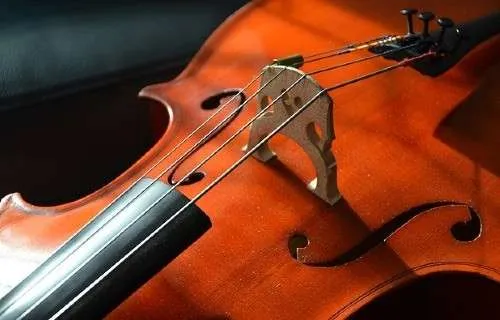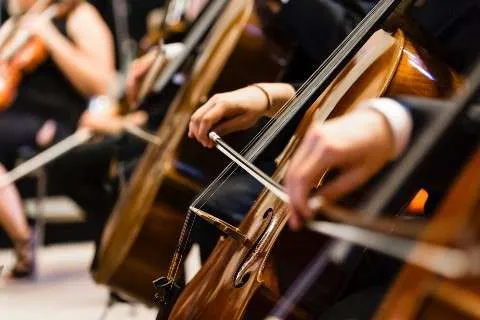Many orchestras, string ensembles, and chamber ensembles use the cello as the instrument that plays some of the most melodious and pleasant tunes. The cello is also rising in popularity for its role in rock, pop, metal, and other genres of music. The benefits of learning to play the cello and playing on a regular basis are great too.
Being a left handed cellist, you could be contemplating whether or not learning to bow your first cello is worthwhile, or if you could play the instrument professionally. Hopefully, throughout this blog post, we might be able to inspire you to continue your musical journey, right from exploring whether you can play with a left handed cello to learning to play in the regular way.
Table of Contents
Are There Left Handed Cellos?
When it comes to playing the cello in the traditional style, lefties have an advantage. It could actually be easier for them to get the sound they want if they finger the strings on the neck with their dominant hand. This is initially favorable because fingering isn’t easy for beginners. It will not matter as much as you get better at the cello because as you gain dexterity, you’ll also progress to more advanced playing. It makes you more ambidextrous because you will have to learn how to bow with your non-dominant hand, which may feel awkward initially. You could say that the cello is a good instrument for a left-hander to learn. Kinda like a French Horn where you have to press the valves with the fingers of your left hand.
Continue reading to learn why the cello is never played right-handed or left-handed, as well as other useful information.
Cellos are not meant to be oriented towards right-handers or left-handers. The mechanics are not symmetrical but that’s more to do with how the various parts of the instrument work together to produce sound and not to do with which hand has to do what.
Due to the fact that there is no need for a left handed cello, they do not really exist for retail. And even if some specialist luthiers, like Gliga Violins USA, do create the reverse-body instruments, they are rare and expensive. These are more often meant for cellists who have developed a hand injury and want to continue playing on a left-handed cello.
For normal cases, it is not necessary to have the cello oriented for the left or right hand because of the position used to play it. As with playing the violin as a left-hander, it can be played by a left handed cellist in the normal position.
Why Can’t Cellos Just Have Flipped Strings for Left Handers?
Whenever a cello is played, it generates a balanced tone even while supporting the unequal tension across the 4 strings. This phenomenon goes without saying for both right-handed cellists and the left-handed cellists. You might wonder if luthiers can just adjust and flip the strings of the instrument to make it a left handed cello. After all, you can reverse the strings quite easily on a guitar. However, it is not just impossible with a cello but might also damage it permanently:
The Thicker C Strings

It’s common for cello fingerboards to present a significant drop under the C string mainly because of the fact that it is rather thicker than the A string in cellos. This is to allow the C string enough room to vibrate freely.
The Placement of the Sound Post
The melody or tune that a cellist might be playing needs to be very precise and no string should sound brighter or louder than the rest. This is why the sound post goes on the left side in order to equalize the unequal range of vibrations.
The Position of the Bass Bar
And lastly, the bass bar on the front right side of the instrument is very important since it helps disperse the C string weight vertically.
In a nutshell, it is not nearly possible for luthiers, or anyone for that matter, to just flip the instruments around and make the cellos go CGDA instead of ADGC. Your cello’s sound and structural integrity will suffer as a result of the imbalanced weight on the left side.
Can You Play Cello Left Handed?

You can play the cello even if you’re a left-hander but only if you play like all the other cellists you see, i.e. fingering the strings with your left hand and bowing with your right. The reason is bowing the cello with the right hand is required if you wish to play professionally, or even participate in school orchestras. An elbow into your neighbor will result otherwise.
It is a good thing you are a lefty since there is an advantage to being one if you want to learn to play the cello. While acquiring fingering abilities, you may progress a little faster than your right-handed peers because your dominant left hand will be easier to train for dexterity in the beginning. Left-handed dexterity is essential for learning the cello rapidly.
On the other hand, bowing with your non-dominant right hand may be difficult at first, but you will find it easier and will be able to bow faster as time goes on. Even right-handed players will find the bowing action awkward at first. Overall, you may learn to play the cello faster because you will be using your dominant hand’s fingers on the fingerboard.
How to Play Cello Left Handed
If you are left handed, you certainly need not panic or get worried. You can still learn to play the cello and do a phenomenal job with it. Here’s how you can play your cello if your dominant hand is the left one:
You must first complete the fundamental training approach to learn how to play the cello. It is assumed that you know how to read music at a basic level. This is vital because if you do not know how to read music sheets, you will not be able to play good cello music.
Even if you are left-handed, you will need to learn precise fingering techniques to play the cello. However, as a lefty, you will learn them faster because your dominant hand is your left. A typical aspect of the training process is doing workouts to increase your muscle movements and finger dexterity. On the cello, these exercises are usually done to strengthen muscles and fingers that have never been utilized before.
What is the Body Position While Playing a Cello?
Cellists must think of their bodies as a whole, with all of their components connected and interacting. When we are out of balance, it affects nearly every other component of our playing technique. To begin, when we are out of balance, we must adjust by using more core and back muscles.
When we are balanced, on the other hand, we expend less energy maintaining our stance, allowing our back and core muscles to support our arms as they do the crucial duty of playing the cello.
When learning to play the cello, keep the following rules in mind:
- Keep the natural bend of your spine in mind
- Use a cello chair and/or an orthopedic wedge cushion
- Make sure you are sitting in a chair that is the proper height for you
- Find and use a balanced stance for your body
- Lengthen your spine and keep your head in a neutral position
Conclusion
Many left-handed cellists claim that they have never seen a cellist play the cello left-handed in all their years of playing. Learning to play a left-handed cello requires a lot of effort, partially because we must train our muscles to do something they have never done before. For playing a left-handed cello, make sure your training is as targeted as possible. If you have the opportunity, take cello lessons.
Even if you are left-handed, you can generate beautiful and inspiring notes on your cello. Experts even say that you do not have to make major structural adjustments to make a cello left-handed. The cello does not need to be modified for left-handed players.
